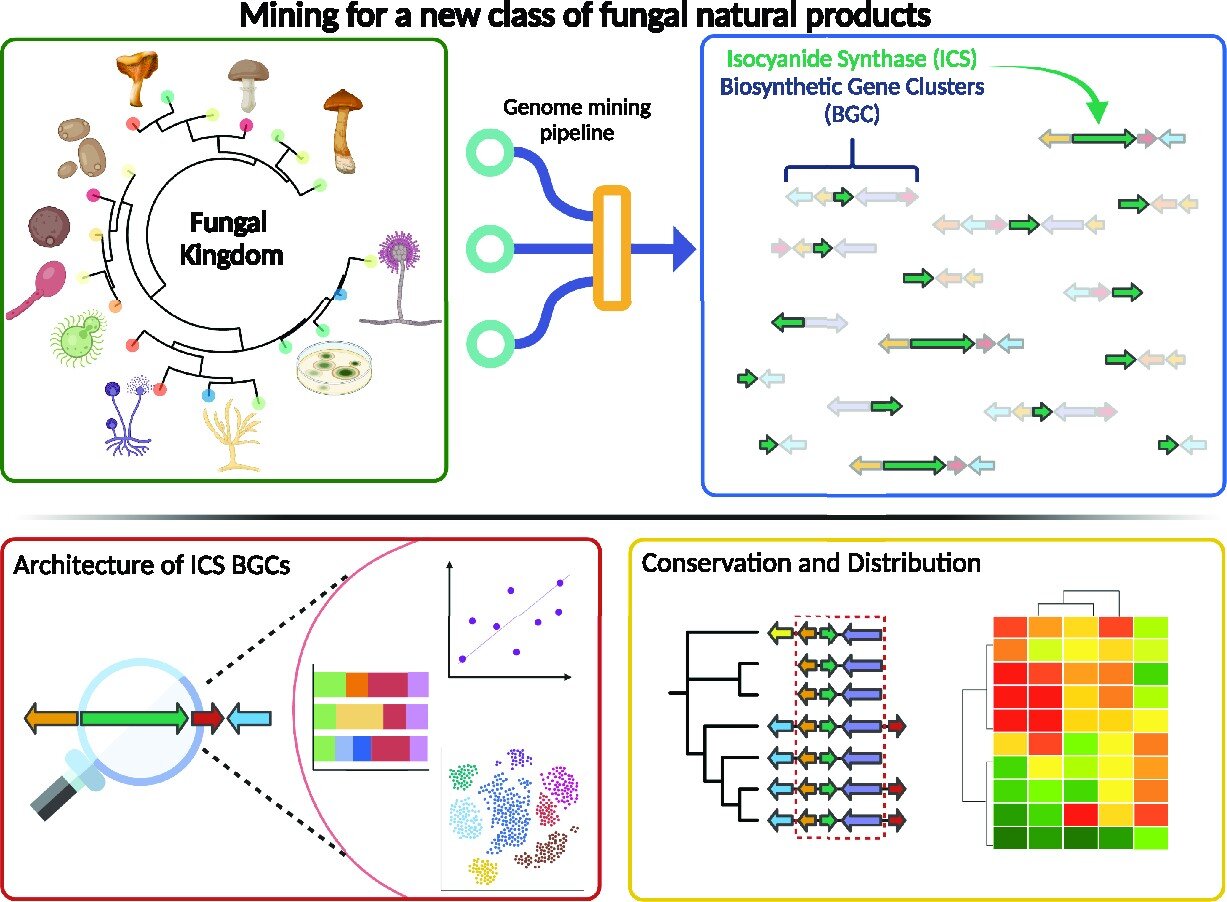
A groundbreaking discovery in the world of fungi has revealed a previously unknown type of chemistry that is both widespread and highly reactive, suggesting the presence of valuable biological compounds with potential applications in medicine and chemistry. This hidden chemistry has only recently come to light, after years of scientific research and the development of advanced computer algorithms. In the past, scientists had relied on extracting compounds from fungi and studying their effects, but this approach often led to redundant findings.
To overcome this limitation, researchers focused on understanding the genes responsible for producing these unique natural compounds. By designing algorithms that could search for these specific genes, they were able to revolutionize the process and make it more efficient. However, even these algorithms had limitations, as they were primarily designed to identify genes related to a few specific enzymes. This restricted their ability to discover new compounds and led to repeated discoveries.
In 2005, the genome of a fungus called Aspergillus fumigatus was sequenced, revealing an abundance of gene clusters associated with the production of interesting secondary metabolites. This discovery hinted at the vast potential of fungi in producing natural products. Further research uncovered the presence of gene clusters involved in biochemical processes driven by an enzyme called isocyanide synthase, which was previously unrecognized as a common chemical catalyst in bacteria and fungi.
In a recent study published in the journal Nucleic Acids Research, a team of researchers unveiled a new algorithm specifically designed to search fungal genomes for biosynthetic gene clusters responsible for isocyanide synthesis. The algorithm was applied to over 3,300 fungal species and revealed that isocyanide production is the fifth-largest class of natural products produced by fungi. This significant finding highlights the previously unnoticed prevalence of isocyanide chemistry and its potential for diverse applications.
The existence of over 1,300 fungal species with isocyanide gene clusters suggests that these clusters are producing compounds beneficial to the fungi, indicating their potential usefulness in various fields. By cataloging these gene clusters and identifying unique characteristic patterns, researchers can begin to decipher their functions and explore their potential applications. The availability of a searchable website allows other laboratories to access this information easily and embark on their own investigations.
The exploration of isocyanide chemistry in fungi holds great promise for the discovery of novel compounds with significant societal benefits. These compounds may include antibacterial drugs, pesticides, and catalysts for industrial and pharmaceutical chemistry. However, due to the limited understanding of isocyanides, their exact products and purposes remain largely unknown. Researchers studying fungi responsible for agricultural blights see this discovery as an opportunity to unravel the role of isocyanides in fungal pathogenicity and potentially develop strategies for control.
This groundbreaking research opens up new avenues for harnessing the hidden potential of fungi and their unique chemistry. By unlocking the secrets of these gene clusters, scientists may uncover a wealth of valuable compounds that could revolutionize various fields, from healthcare to manufacturing.
Denial of responsibility! SamacharCentrl is an automatic aggregator of Global media. In each content, the hyperlink to the primary source is specified. All trademarks belong to their rightful owners, and all materials to their authors. For any complaint, please reach us at – [email protected]. We will take necessary action within 24 hours.

Shambhu Kumar is a science communicator, making complex scientific topics accessible to all. His articles explore breakthroughs in various scientific disciplines, from space exploration to cutting-edge research.

